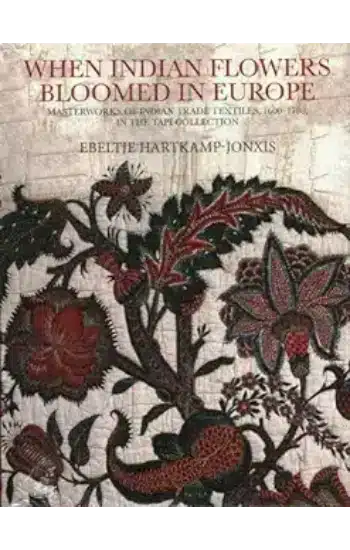
Save: 25%

Save: 20%
When Indian Flowers Bloomed In Europe
Publisher:
| Author:
| Language:
| Format:
Publisher:
Author:
Language:
Format:
₹2,500 ₹1,875
Save: 25%
In stock
Ships within:
In stock
| Weight | 278 g |
|---|---|
| Book Type |
ISBN:
Page Extent:
It is a fascinating story that the merchant companies of Europe, established with the aim of sourcing exotic eastern spices, stumbled upon Indian handmade textiles and found these a highly profitable product for their home markets. This process was to have far-reaching consequences for colonial history. In this book the author takes us on a tour of 30 masterpieces of Indian textiles from the TAPI Collection, commissioned by European patrons in the 17th and 18th centuries. Presented here are outstanding examples of large, intricately hand-drawn, dye-painted cotton chintzes made in the Coromandel Coast, and embroidered palampores and garment pieces made in Gujarat and the Deccan. Textiles made for Dutch and British patrons demonstrate the aesthetic high point achieved by Indian artisans in the 17th and 18th centuries. Indian patterned cottons such as these, with their infinite variety of floral motifs, left a profound and enduring impact on textile designers in the western hemisphere, unexpectedly setting the stage for the Industrial Revolution.
It is a fascinating story that the merchant companies of Europe, established with the aim of sourcing exotic eastern spices, stumbled upon Indian handmade textiles and found these a highly profitable product for their home markets. This process was to have far-reaching consequences for colonial history. In this book the author takes us on a tour of 30 masterpieces of Indian textiles from the TAPI Collection, commissioned by European patrons in the 17th and 18th centuries. Presented here are outstanding examples of large, intricately hand-drawn, dye-painted cotton chintzes made in the Coromandel Coast, and embroidered palampores and garment pieces made in Gujarat and the Deccan. Textiles made for Dutch and British patrons demonstrate the aesthetic high point achieved by Indian artisans in the 17th and 18th centuries. Indian patterned cottons such as these, with their infinite variety of floral motifs, left a profound and enduring impact on textile designers in the western hemisphere, unexpectedly setting the stage for the Industrial Revolution.
About Author
Reviews
There are no reviews yet.
Related products
FROM THE LAND OF THE THUNDER DRAGON Textile Art of Bhutan PB.
Save: 20%
The Shoemaker’s Stitch: Mochi Embroideries of Gujarat in the TAPI Collection
Save: 25%
Crafting a Future: Stories of Indian Textiles and Sustainable Practices
Save: 25%
RELATED PRODUCTS
Crafting a Future: Stories of Indian Textiles and Sustainable Practices
Save: 25%
The Shoemaker’s Stitch: Mochi Embroideries of Gujarat in the TAPI Collection
Save: 25%



Reviews
There are no reviews yet.